Not long ago James from 3tronics (his small UK-based flashlight/parts company) launched the idea on BLF of offering fluorescent yellow powdercoated S2+ hosts for sale ( https://budgetlightforum.com/t/-/72767 ). He did not ask much money for it, it was just something new that he wanted to try out. It sounded like a neat idea but also the question was asked to what extent the coating would inhibit the heatshedding capabilities of the flashlight. That concern was fair enough, but then the discussion turned really nasty, almost blaming him that he was trying to sell potential pipe bombs to innocent customers. Of course that discussion made him decide in the end not to go through with the idea, which I and some others found rather disappointing.
Then James wrote me a PM asking me to just test it out instead of all the talk about it. That being exactly my BLF-philosophy I had no choice but agreeing and so he made me a yellow powder coated light for testing and sent it to me. Before I start this post, I'm the first to admit that no test is perfect and no test is complete, but here's how I tested it.
I reckoned that the most logical way to test this host is to build it up for the maxiumum output that an innocent customer that still can handle a solder iron would probably build it: with an XP-L led, a 8x7135 lineair driver from the same store and a high drain 18650 battery. Folks who are able to source and use a FET-driver for an S2+ I see as not innocent but as flashlight enthousiasts and regard them smart enough to know that the power from a FET-driver is certainly too much for the S2+ to leave it unattended at the highest mode.
For comparison I used an anodised Convoy S2+ that I had in house, it appeared a dark grey one with short tube, and because I did not have a matching grey 18650 tube I used a black one that I had around.
Here's the parts, Convoy 8x7135 drivers, cool white XP-L leds from Fasttech, 16mm Noctigon boards (the XP-G2's were replaced by the XP-L's later):
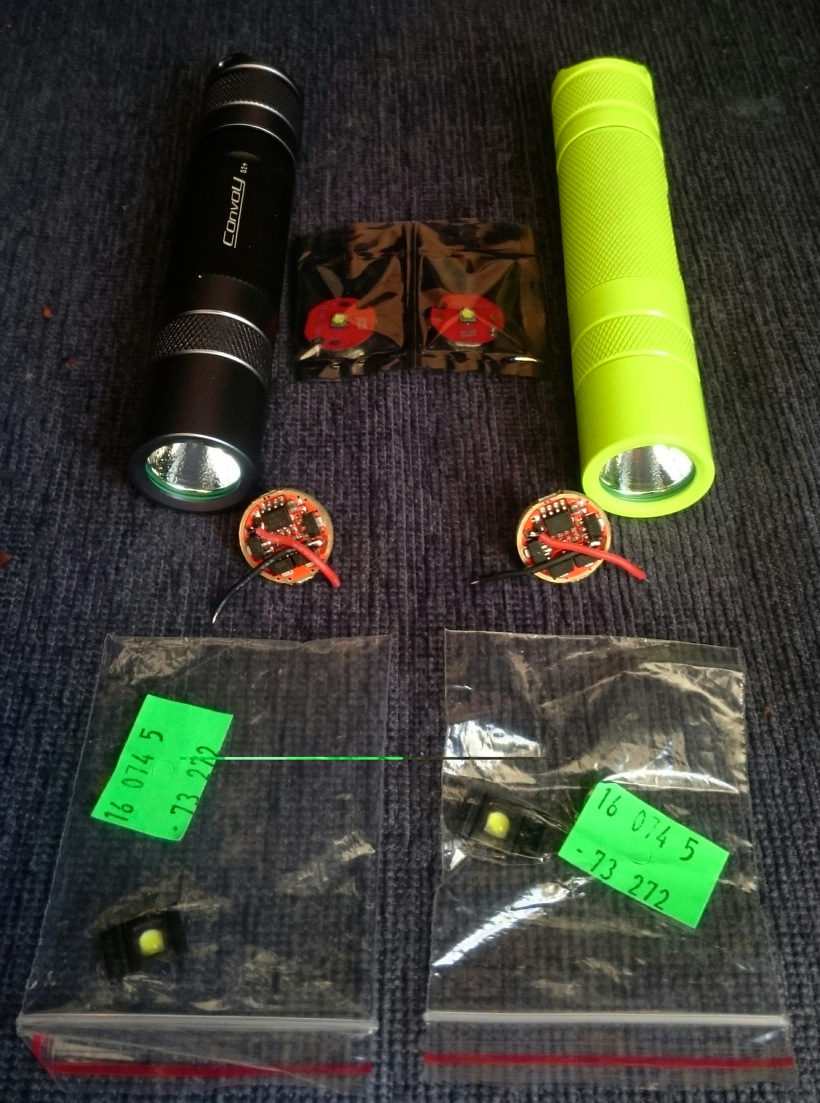
Because I wanted to test the heat build-up in the lights and not possible led failure, I maximised the heat path from the leds to the shell by soldering the ledboards to the brass pills. Also to keep the light as long as possible in regulation at the desired test current, I bypassed the tail springs. I did not bypass the driver spring as that could influence the route that the heat goes in this light, and I do not expect that 'innocent customer' to do a spring bypass anyway.

As a side note: I noticed that the Convoy driver is not a direct fit for their own Convoy S2+ driver retaining rings, I had to ream them quite a bit to make the 7135 chips fit, I even had to move one chip that was closer to the edge than the rest a bit to the middle.
So here's the result, I measured exactly 2.75 regulated amps for both lights, the yellow one puts out 900 lumen @ 30 seconds, the black/grey one 890 lumen, close enough.
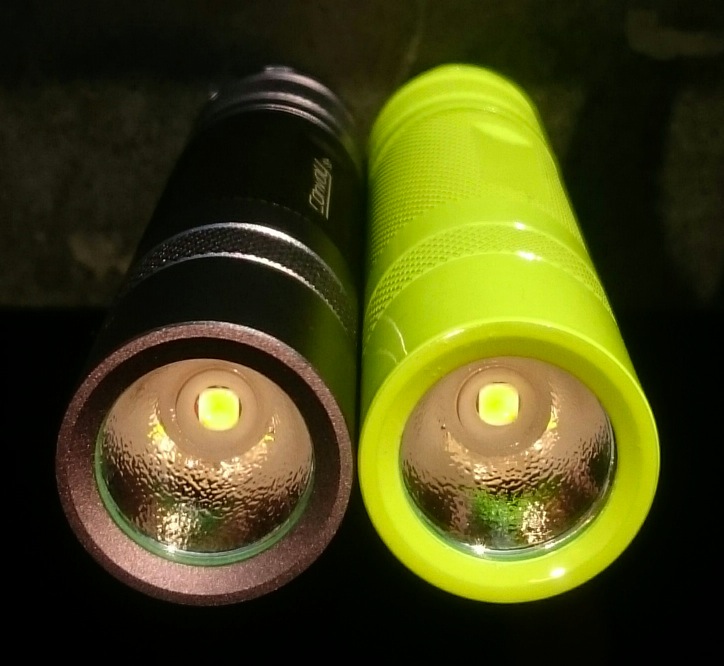
I already had become quite fond of that yellow flashlight but unfortunately in the name of science I had to ruin it right away. ("what happened to my Honda?" "I'm sorry baby, I had to crash that Honda").
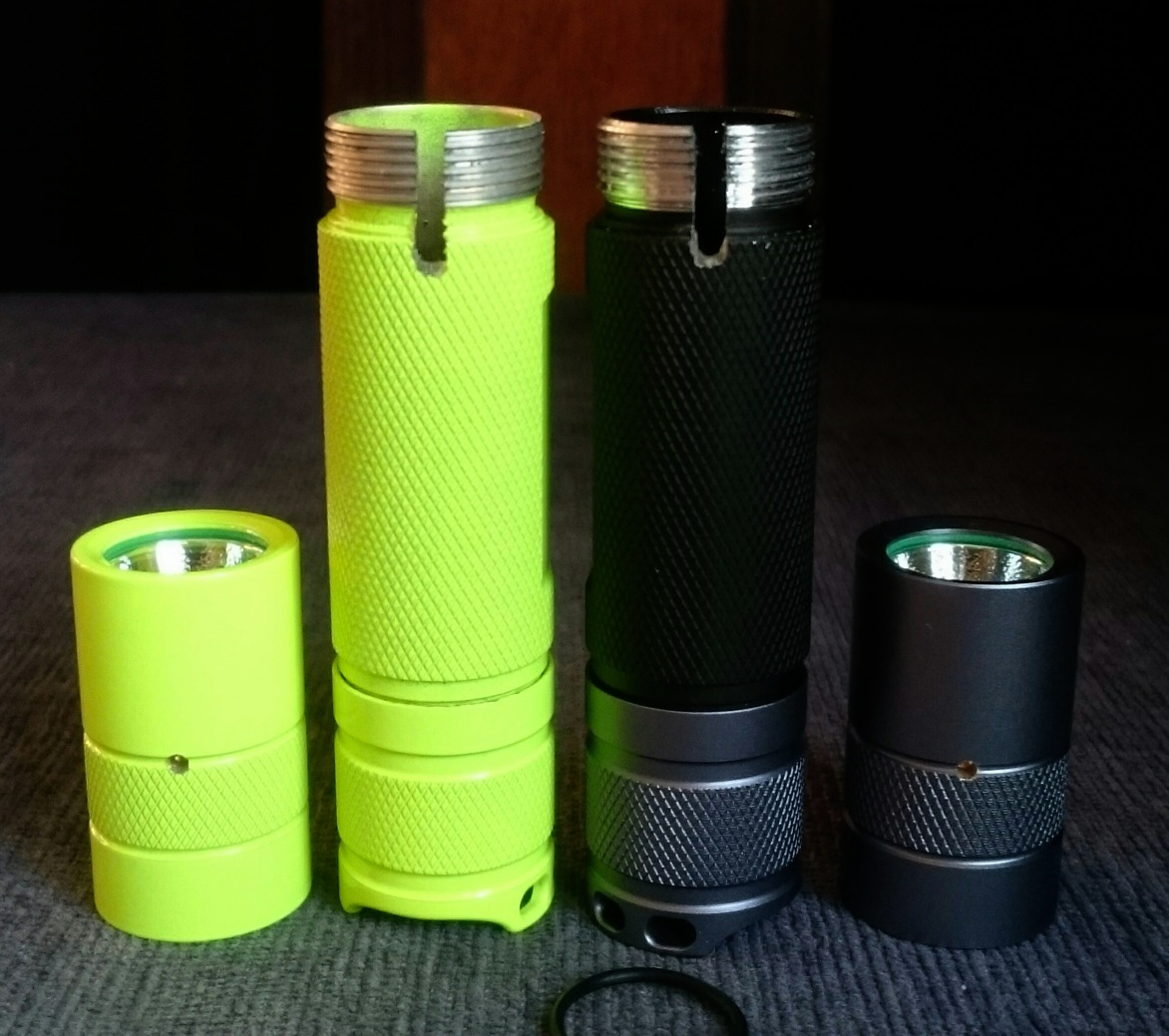
The idea was to use two thermocouples to measure temperature, one going inside the pill (hence the 2mm wide and 4mm deep holes in the head, going inside and almost through the side of the pill, just under the shelf for the ledboard, and one thermocouple measuring the temperature of the plus-plate of the battery.
The thermocouples that I used were cheap ones that came with a batch of 40 DMM's that I bought for work a couple of years ago (secondary school), they show quite some variation in readings, but I selected two thermocouple-DMM combinations that were close to correct (both in offset and slope) using a calibrated water bath at several temperatures. I trust them within a 2 or 3 degrees, which is close enough for this test to make valid points.
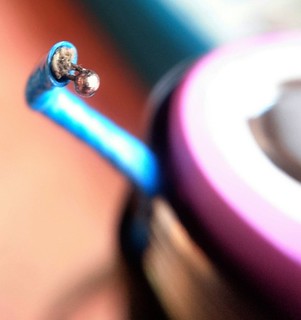
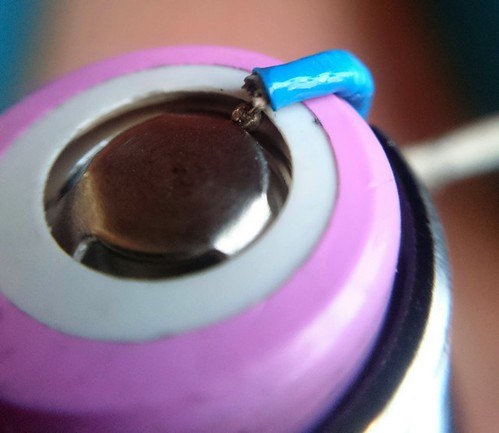
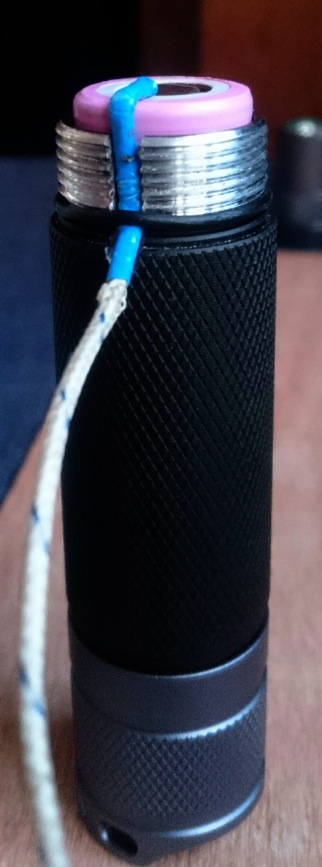
So here's how the test set-up looked like. I added some Arctic silver on the thermocouple going in the head to improve conductance, but I did not want to do that for the battery one. During the test it was pressed against the plus-plate though. The left temperature is the top of the battery, the right temperature is inside the pill.
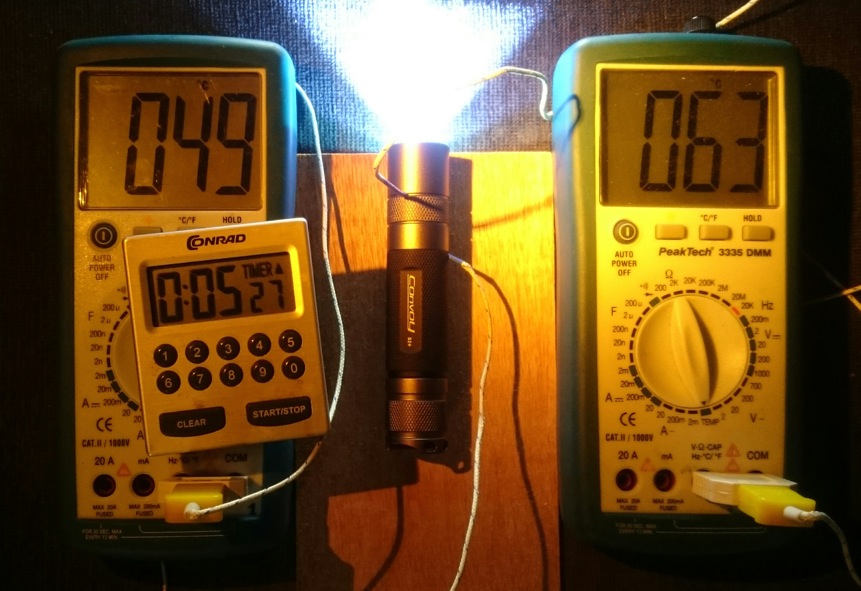
I tested the heat build-up for both the black/grey and the yellow powder coated S2+ during 36 minutes, both tests were done at high 2.75A setting with the same freshly charged Samsung 30Q battery, that was recharged between the tests. The tests were done at room temperature without airflow, the flashlights resting on a piece of wood. The tests were filmed and the numbers later written down. After 36 minutes the tests were stopped, the flashlight cooled down a bit, checked that the thermocouples had stayed in the correct position, and the current was measured. The current was 2.5A then, so only just out of regulation. I first tested the grey flashlight, then the yellow one, and after that to check repeatability of the method, I tested the grey one once more which gave the exact same numbers as the first grey test.
Here's a fragment of the yellow powdercoated S2+ temperature test (as a distraction, you can hear me talking to my son in the background ![]() ):
):
I noticed that for each test the starting temperature for the head was about 2 degrees higher than for the pill. I interpreted that as a reading difference between the two thermocouples so for the graphs I substracted 2 degrees from all pill temperatures, not very scientific but I did it anyway and it does not affect the conclusions in any way.
So here are the findings in a graph. You will notice a few missing numbers, that is because my phone keeps stopping filming all the time, so I ended up with multiple fragments with bits missing ![]() . Luckily there were enough numbers for a decent graph
. Luckily there were enough numbers for a decent graph ![]()
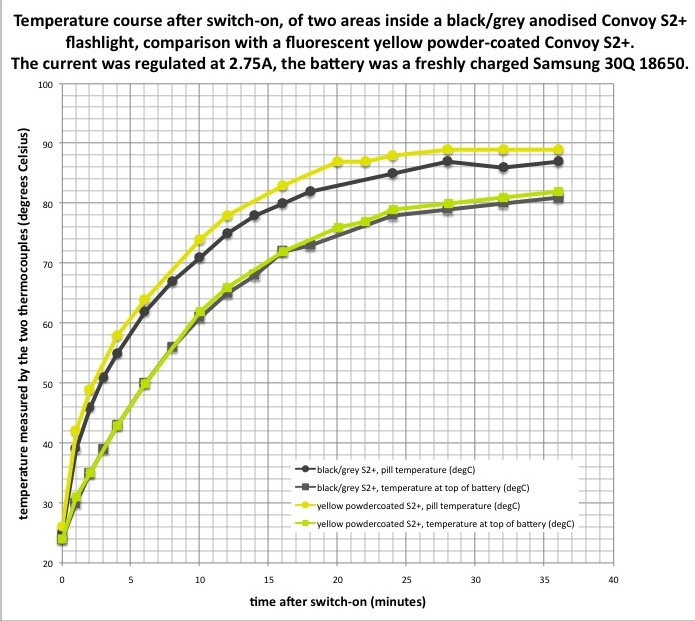
There's a few conclusions from this test:
1) an S2+ running unattended at 2.75A gets burning hot, way too hot to touch, but the temperature eventually levels out at still safe temperatures, both inside the pill and at the battery. Nowhere near unsoldering temperatures, nowhere near thermal runaway temperatures for the battery (I think I recall that a non-high-drain li-ion battery becomes thermally unstable above 150 degrees Celsius, and higher temperatures for high-drain cells)
2) as expected, the battery temperature lags behind compared to pill temperature, but even though I stopped the test at 36 minutes (girlfriend came home), I expect that the battery never gets as hot as the pill. (after 36 minutes the light was already out of regulation, so the temperature I expect even to decrease soon)
3) the heatshedding of the powder coated S2+ is hardly worse than the anodised S2+, in this test they differ only 3 degrees in end temperature.
4) I hope this test ends the discussion about selling powder coated flashlights as an irresponsable act.
What's next?
I may do this test later with a FET-driver in the S2+, but that is out of mere curiosity, I think the point is sufficiently made that it does not make a huge difference if your flashlight is powder coated or anodised.
thanks for reading! ![]()
